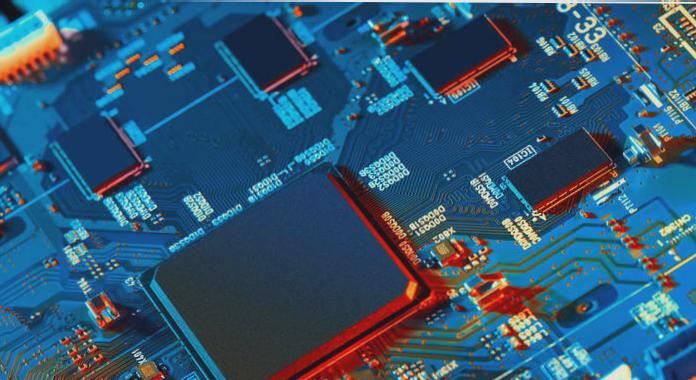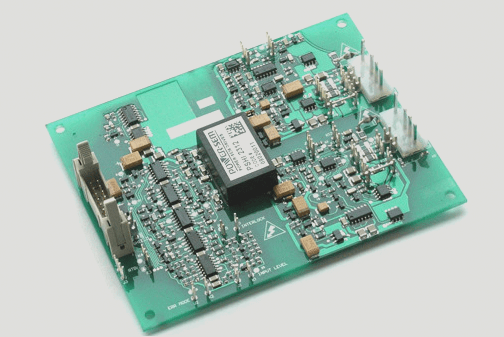1. Industrial PCB manufacturing process:
2. Industrial PCB design:
3. In industrial PCB manufacturing, design and layout are the most critical stages.
4. The design steps for manufacturing industrial PCBs are crucial, as they determine the PCB’s appearance and performance.
5. Hire a designer capable of meeting all the requirements of your industrial application.
6. To avoid errors, use the latest automation software to quickly detect and resolve issues.
7. Industrial PCB prototype:
8. After completing the design and layout, find a manufacturer specializing in industrial PCB prototyping.
9. Prototyping is a crucial step in industrial PCB manufacturing.
10. Once the prototype is ready, have it tested by a third-party company to identify faults and errors.
11. After receiving the test results, provide them to your designer for necessary adjustments.

1. Now send the edited design to the manufacturer for final production. When finished, proceed to the next step.
2. **Industrial PCB Assembly:**
3. After the final PCB is manufactured, the next step is to assemble the components onto it.
4. PCB assembly can be sourced from various manufacturers.
5. However, before selecting a manufacturer, it is crucial to review their assembly history and capabilities. Look into the company’s reviews.
6. Assess whether they have enough skilled experts on hand. This will provide insight into their quality.
7. Finally, determine the installation cost for each board. The manufacturer’s quality-to-cost ratio should be favorable. Also, investigate delivery times and additional expenses.
8. In the realm of industrial printed circuit boards, performance and quality are paramount, so even if it means incurring additional costs, strive to keep them to a minimum.
9. **High-Quality Industrial PCB Features:**
10. **Durable Base Material:**
11. The base material of a high-quality PCB must be robust and dependable, particularly as it is used in high-power industrial applications.
12. A high-quality industrial PCB should be capable of handling large currents.
13. A superior substrate helps prevent warping at elevated temperatures and resists the impact of moving components.
14. It should also be easy to repair and replace components when needed.
15. **Thick Solder Mask:**
16. A high-quality PCB must feature a thick solder mask to protect it from corrosion.
17. A thick solder mask is essential not only during soldering but also during component placement to safeguard the entire wiring board.
18. **Testing:**
19. The PCB manufacturing process requires rigorous testing. Before finalizing the product, the PCB prototype must be thoroughly tested.
20. After testing, identify any errors and address them in the final product. Once this is done, you can proceed with launching a high-quality PCB product.
21. A defective PCB can damage your brand by failing to deliver quality products. Therefore, prioritize thorough testing.
22. **Copper Cladding:**
23. To be candid, copper plating is crucial for producing high-quality and reliable industrial PCBs. Before selecting a manufacturer, ensure they can provide copper-clad PCBs. If they cannot, do not choose them for your PCB manufacturing. They should meet the IPC4101 Class B/L quality standard.
24. **Quality Components:**
25. A high-quality industrial PCB must include top-grade components.
26. Before assembling the components, verify that they are all high-quality and sourced from the original manufacturer.
27. **Industrial PCB Applications:**
28. **Manufacturing Equipment:**
29. Industrial PCBs are extensively used in constructing industrial equipment that handles complex systems within the industrial sector.
30. **Measuring Equipment:**
31. In an industrial environment, various types of equipment require different power supplies.
32. This power equipment relies significantly on industrial PCBs.
33. **Industrial Robots:**
34. In the age of machine learning and robotics, many robots are employed in the industrial sector to reduce manufacturing time and costs.
35. These robots operate with numerous active industrial PCBs. The central processing system of these robots consists of industrial PCBs featuring high-performance processors, costly microcontrollers, and various resistors, capacitors, LEDs, and other crucial components.
36. **Industrial Automation Systems:**
37. Industrial automation systems are valuable for automating entire manufacturing processes and controlling manufacturing cells from remote locations.
38. Such automation systems consist of intricate industrial PCBs. Due to their high configuration and operational capabilities, industrial PCBs are essential for managing these complex systems.
39. Industrial PCBs have numerous applications and are widely utilized across various industrial fields.
2. Industrial PCB design:
3. In industrial PCB manufacturing, design and layout are the most critical stages.
4. The design steps for manufacturing industrial PCBs are crucial, as they determine the PCB’s appearance and performance.
5. Hire a designer capable of meeting all the requirements of your industrial application.
6. To avoid errors, use the latest automation software to quickly detect and resolve issues.
7. Industrial PCB prototype:
8. After completing the design and layout, find a manufacturer specializing in industrial PCB prototyping.
9. Prototyping is a crucial step in industrial PCB manufacturing.
10. Once the prototype is ready, have it tested by a third-party company to identify faults and errors.
11. After receiving the test results, provide them to your designer for necessary adjustments.

1. Now send the edited design to the manufacturer for final production. When finished, proceed to the next step.
2. **Industrial PCB Assembly:**
3. After the final PCB is manufactured, the next step is to assemble the components onto it.
4. PCB assembly can be sourced from various manufacturers.
5. However, before selecting a manufacturer, it is crucial to review their assembly history and capabilities. Look into the company’s reviews.
6. Assess whether they have enough skilled experts on hand. This will provide insight into their quality.
7. Finally, determine the installation cost for each board. The manufacturer’s quality-to-cost ratio should be favorable. Also, investigate delivery times and additional expenses.
8. In the realm of industrial printed circuit boards, performance and quality are paramount, so even if it means incurring additional costs, strive to keep them to a minimum.
9. **High-Quality Industrial PCB Features:**
10. **Durable Base Material:**
11. The base material of a high-quality PCB must be robust and dependable, particularly as it is used in high-power industrial applications.
12. A high-quality industrial PCB should be capable of handling large currents.
13. A superior substrate helps prevent warping at elevated temperatures and resists the impact of moving components.
14. It should also be easy to repair and replace components when needed.
15. **Thick Solder Mask:**
16. A high-quality PCB must feature a thick solder mask to protect it from corrosion.
17. A thick solder mask is essential not only during soldering but also during component placement to safeguard the entire wiring board.
18. **Testing:**
19. The PCB manufacturing process requires rigorous testing. Before finalizing the product, the PCB prototype must be thoroughly tested.
20. After testing, identify any errors and address them in the final product. Once this is done, you can proceed with launching a high-quality PCB product.
21. A defective PCB can damage your brand by failing to deliver quality products. Therefore, prioritize thorough testing.
22. **Copper Cladding:**
23. To be candid, copper plating is crucial for producing high-quality and reliable industrial PCBs. Before selecting a manufacturer, ensure they can provide copper-clad PCBs. If they cannot, do not choose them for your PCB manufacturing. They should meet the IPC4101 Class B/L quality standard.
24. **Quality Components:**
25. A high-quality industrial PCB must include top-grade components.
26. Before assembling the components, verify that they are all high-quality and sourced from the original manufacturer.
27. **Industrial PCB Applications:**
28. **Manufacturing Equipment:**
29. Industrial PCBs are extensively used in constructing industrial equipment that handles complex systems within the industrial sector.
30. **Measuring Equipment:**
31. In an industrial environment, various types of equipment require different power supplies.
32. This power equipment relies significantly on industrial PCBs.
33. **Industrial Robots:**
34. In the age of machine learning and robotics, many robots are employed in the industrial sector to reduce manufacturing time and costs.
35. These robots operate with numerous active industrial PCBs. The central processing system of these robots consists of industrial PCBs featuring high-performance processors, costly microcontrollers, and various resistors, capacitors, LEDs, and other crucial components.
36. **Industrial Automation Systems:**
37. Industrial automation systems are valuable for automating entire manufacturing processes and controlling manufacturing cells from remote locations.
38. Such automation systems consist of intricate industrial PCBs. Due to their high configuration and operational capabilities, industrial PCBs are essential for managing these complex systems.
39. Industrial PCBs have numerous applications and are widely utilized across various industrial fields.


